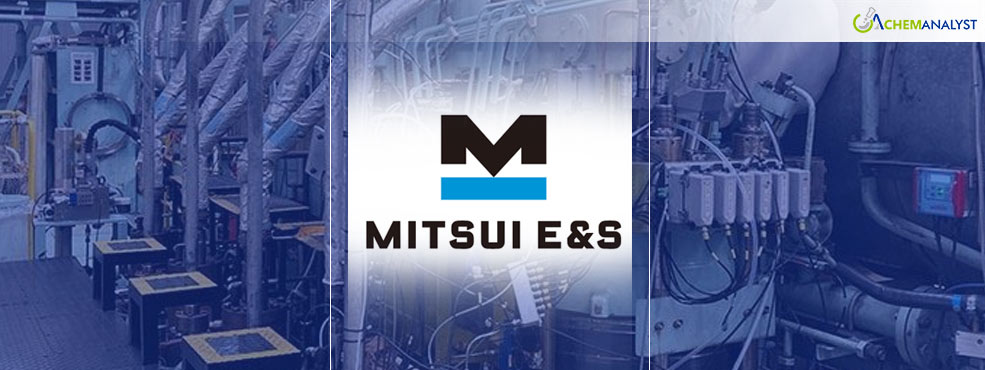Mitsui E&S Begins Full-Scale Testing of World’s First Commercial Two-Stroke Ammonia Engine
- 18-Feb-2025 6:00 PM
- Journalist: Robert Hume
In a major advancement for the decarbonization of the maritime industry, Mitsui E&S has initiated full-scale testing of the world's first commercial two-stroke, dual-fuel ammonia engine. This groundbreaking development signifies a significant step towards reducing greenhouse gas emissions in the shipping sector, which has been identified as a major contributor to global pollution. The testing of the MAN B&W 7S60ME-LGIA (-Liquid Gas Injection Ammonia) Mk 10.5 prototype engine is underway at Mitsui E&S's Tamano Factory in Japan, marking a crucial milestone in the pursuit of sustainable maritime operations.
This pioneering engine, the first of its kind designed for commercial use, can run primarily on ammonia, a fuel that holds great promise for decarbonizing the shipping industry. The 60-bore engine is destined for installation aboard a 200,000-dwt bulk carrier currently under construction at Imabari Shipbuilding. This vessel, a joint venture involving "K" LINE, NS United, and ITOCHU Corporation, will be a trailblazer in demonstrating the viability of ammonia-powered vessels in the commercial maritime sector.
A key feature of the engine is the incorporation of MAN Energy Solutions' proprietary High Pressure Selective Catalytic Reduction (HPSCR) system. This innovative technology ensures compliance with the International Maritime Organization's (IMO) Tier III emission standards, which are critical for reducing nitrogen oxide emissions from marine engines. The development of this ammonia engine aligns with the growing urgency to decarbonize the shipping industry and reduce its environmental impact.
Bjarne Foldager, Head of Two-Stroke Business at MAN Energy Solutions, emphasized the significance of ammonia as a viable fuel option for the maritime industry. He highlighted the potential of ammonia, particularly when used with bio-fuel oil as a pilot oil, to achieve carbon-neutral combustion. Foldager anticipates that ammonia, along with methanol and methane, will emerge as one of the three dominant alternative fuels in the maritime market.
The comprehensive testing phase will focus not only on evaluating the performance of the ammonia engine but also on verifying the efficacy and safety of Mitsui E&S's independently developed ammonia fuel-supply system. This includes rigorous testing of the engine's safety features and the reliability of the supporting systems designed to handle ammonia fuel, a substance that requires specialized handling due to its unique properties.
Ole Pyndt Hansen, Head of Two-Stroke R&D at MAN Energy Solutions, highlighted the continuity of this testing phase, building upon successful single-cylinder ammonia fuel tests previously conducted at their Research Centre in Copenhagen. He emphasized the importance of gaining operational experience at sea to further refine the engine's performance and reliability before its commercial launch, anticipated by the end of 2026, contingent on shipbuilding schedules and successful sea trials.
The commencement of this full-scale testing represents a major leap forward in the maritime sector's pursuit of sustainability goals. It demonstrates a growing commitment within the industry to explore and adopt alternative fuels, reduce greenhouse gas emissions, and drive the transition towards a low-carbon future for maritime transport. This initiative is a testament to the collaborative efforts of industry leaders like Mitsui E&S and MAN Energy Solutions in paving the way for a more sustainable and environmentally responsible shipping industry.



